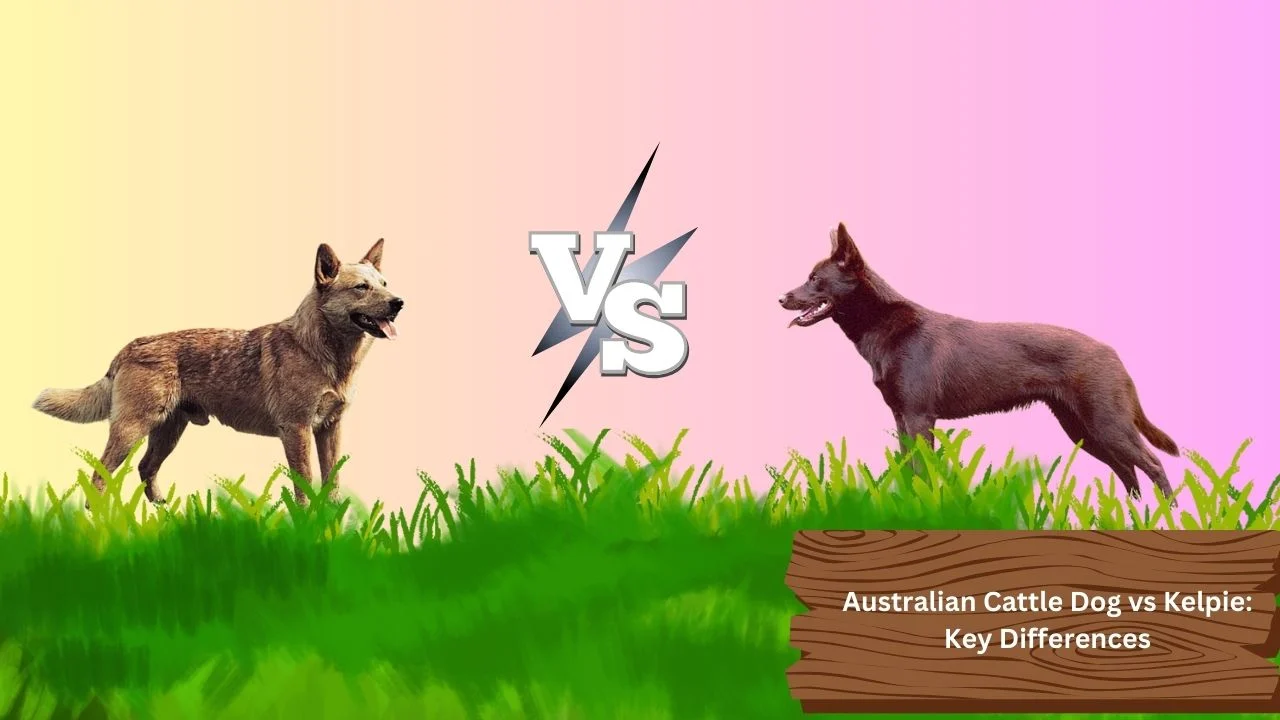Guys, let’s jump into the Australian Cattle Dog vs Kelpie debate. These two are some of the hardest-working dogs you’ll ever see! I’ve met these breeds in the field, and they’re pretty breathtaking. Cattle Dog is strong, and protective, and built for hard work, but Kelpie is even faster and never stops.
They need at least 2 hours of activity daily and are only suitable for very active owners. And if you’re wondering how Stumpy Tail Cattle Dog compares to the Australian one, read this article for more details. Let’s break these two down and find the perfect match for you!
Which dog is easier to train, the Australian Cattle Dog or the Kelpie?
Both breeds are highly intelligent, ranking in the top 50 smartest dog breeds, but training them isn’t the same. The Australian Cattle Dog is more independent and stubborn, requiring 3-4 months of consistent training to follow commands reliably. The Kelpie learns faster and can pick up basic commands in just 4-6 weeks with proper training.
If you’re a first-time dog owner, the Kelpie might be easier, but both need at least 30-45 minutes of mental stimulation daily to stay sharp. Australian Cattle Dog temperament tends to be more independent and strong-willed, requiring firm training. Larger working breeds, like the Saint Bernard and Bernese Mountain Dog, also have unique training challenges, and this comparison breaks down their key differences.
Origins & History
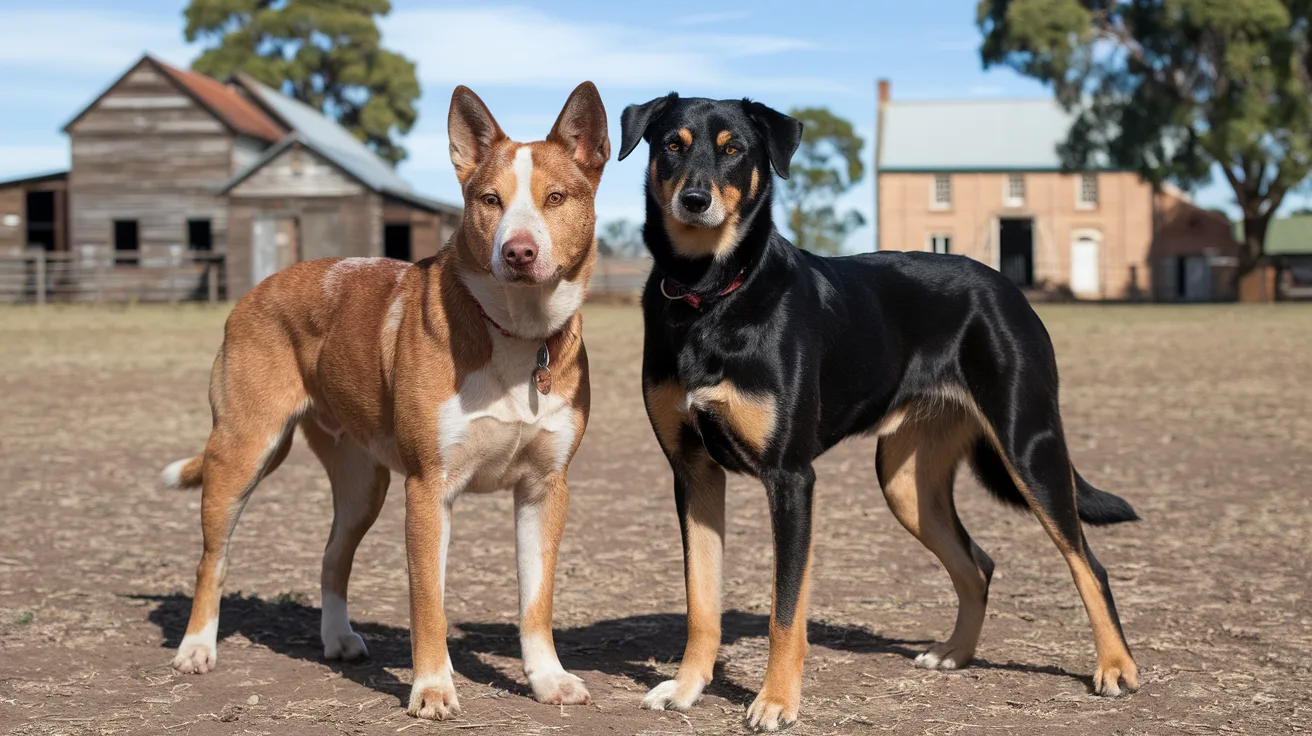
Yes guys, both the Australian Cattle Dog (ACD) and the Kelpie were bred to work hard, but their origins tell different stories.
Australian Cattle Dog – The Cattle Wrangler
In 1840, Australian farmers needed a tough dog to herd cattle over long distances in extreme heat. Their existing European herding dogs weren’t cutting it. That’s when Thomas Hall stepped in and bred dingos with British Collies, creating the Hall’s Heeler, which later became the Queensland Heeler vs. Australian Cattle Dog debate we see today.
This breed was fast, strong, and smart, perfect for controlling stubborn cattle. Over time, they became known as Blue or Red Heelers, depending on their coat colour. When comparing Kelpie vs Blue Heeler differences, it’s clear that both breeds excel in herding but have distinct traits. By 1903, the breed was officially recognised, and they’re still a top choice for herding today.
Australian Kelpie – The Sheepdog with Stamina
The Kelpie was developed in the 1870s when farmers needed a self-sufficient sheepdog that could work nonstop without supervision. These dogs came from Scottish and English sheepdogs, possibly mixed with dingos, which explains their incredible endurance.
While the Kelpie excels in herding, Australian Kelpie intelligence plays a key role in its ability to work independently. Guardian breeds like the Cane Corso and Dogo Argentino have their strengths, and this comparison highlights how they differ in temperament and working abilities.
By 1900, the Kelpie had earned a reputation as a super-fast, high-energy herding dog. They could work 12+ hours a day without tiring, making them the ultimate sheepdog. The breed gained official recognition in 1902 and is still widely used in sheep farms worldwide.
Key Differences in Origins
✔ Australian Cattle Dog – Developed for cattle herding, linked to Dingo ancestry, built for tough terrains.
✔ Kelpie – Designed for sheep herding, descended from Collies, famous for unstoppable energy.
Both breeds became Australian farm legends, and their skills are still unmatched in the herding world!
Physical Traits & Appearance
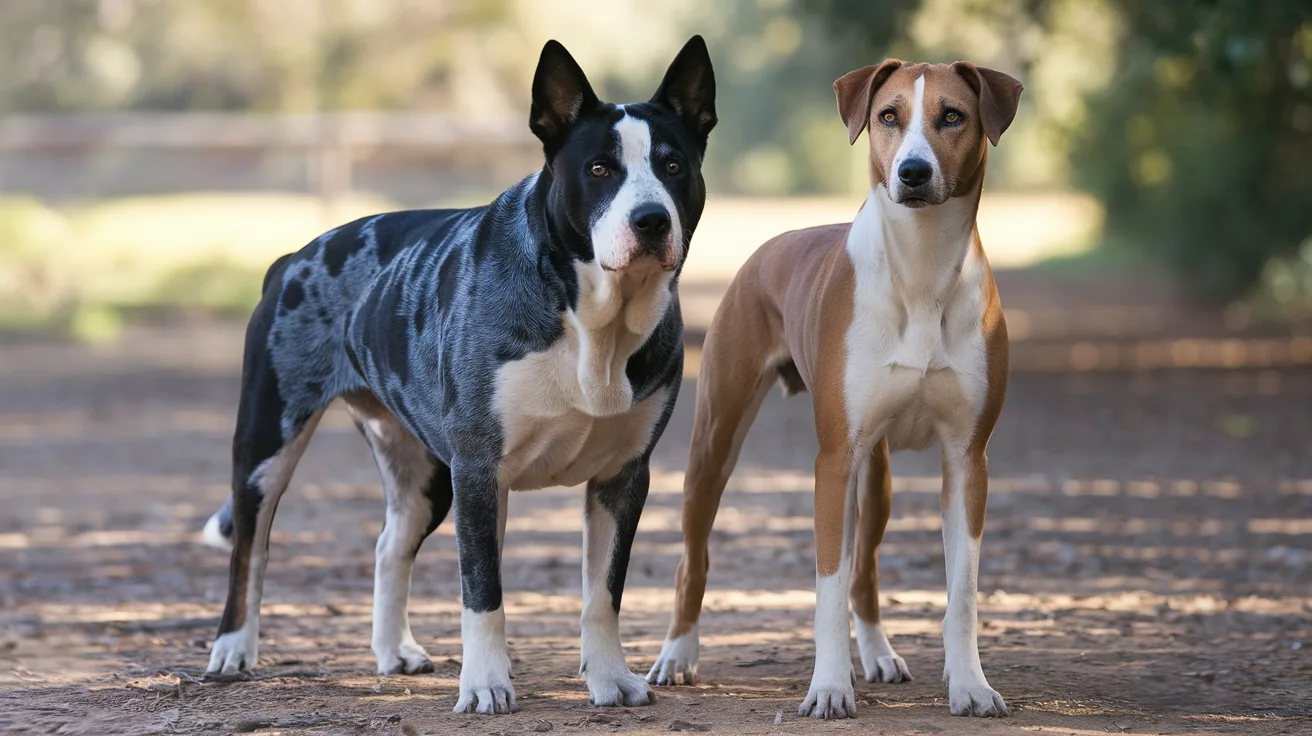
Alright, let’s break down the looks of these two herding powerhouses. When comparing Australian Cattle Dog vs Kelpie, even though both are medium-sized working dogs, their build, coat, and colours have some clear differences.
Size & Build – Strength vs. Agility
- Australian Cattle Dog: 17-20 inches tall, 30-50 pounds, muscular and stocky for endurance.
- Kelpie: 18-22 inches tall, 30-60 pounds, leaner and more agile for quick movements.
Cattle dogs are built tough and compact, while kelpies are lighter on their feet and have slightly taller frames.
Coat Type & Texture – Weather-Resistant Fur
- Cattle Dog: Short, dense double coat, rough texture, built to handle extreme weather.
- Kelpie: Short, smooth single or double coat, lighter but protective.
Cattle Dogs have a thicker, more rugged coat, while Kelpies have a smoother and sometimes longer coat in working lines. While these breeds are built for endurance and herding, Golden Retriever vs. Labrador is another popular comparison among dog lovers.
Coat Colours – Kelpie Has More Variety
- Cattle Dog Colours: Blue, Blue Mottled, Blue Speckled, Red, Red Mottled, Red Speckled.
- Kelpie Colours: Black, Chocolate, Red, Fawn, Blue, Black & Tan.
Cattle Dogs always have a mottled or speckled pattern, while Kelpies come in solid shades or tan markings.
Unique Features – Face & Ears
- Cattle Dog: Broader head, strong jaws, upright ears, shorter muzzle.
- Kelpie: Narrower, fox-like face, perky ears, sleek build.
Temperament & Behavior
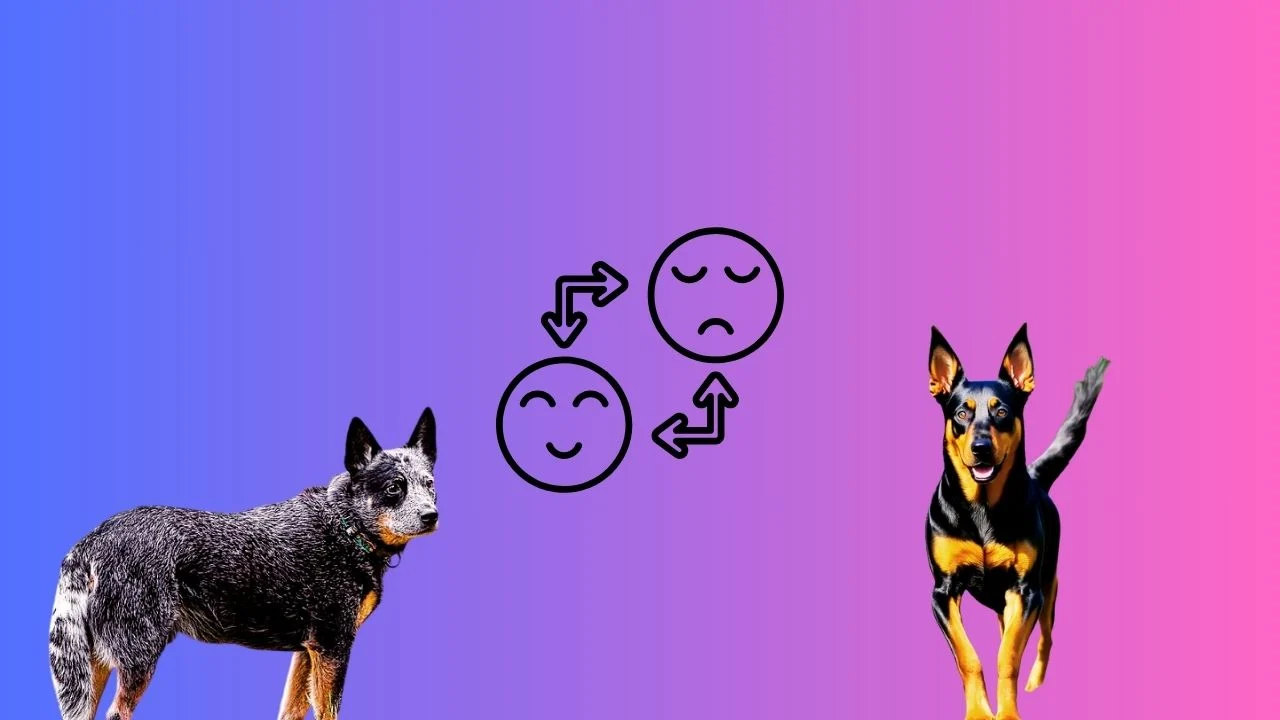
Alright, let’s get straight to the point: How do Australian Cattle Dogs and Kelpies behave? Both are high-energy, intelligent herding dogs, but their personalities have some key differences. Meanwhile, the Percentage of pitbulls in Shelters vs. Other Dogs sheds light on breed perceptions and adoption trends.
1. Intelligence & Trainability
Both breeds are extremely smart, but they learn in different ways.
- Australian Cattle Dogs (ACDs) rank among the 10 most intelligent dog breeds. They’re independent thinkers and can be stubborn if training isn’t firm and consistent.
- Kelpies are slightly easier to train because they’re more eager to please and pick up commands quickly.
Training should start at 8 weeks to prevent bad habits like excessive barking or chasing.
2. Herding Instincts & Work Drive
These dogs need a job, or they’ll find one whether it’s herding your kids or rearranging your furniture. Australian Cattle Dog vs Kelpie debates often come down to their work ethic, and trust me, both breeds thrive when they have a task to do.
- Cattle Dogs are more intense herders and tend to nip at heels (hence the nickname “Heeler”).
- Kelpies are more versatile in their herding style and don’t nip as much, but they still have a strong work ethic.
If you’re not using them for farm work, prepare for daily mental and physical exercise, or they’ll become destructive.
3. Loyalty & Protectiveness
Both breeds are loyal to their owners, but their protective instincts differ:
- Cattle Dogs are more territorial and make better watchdogs. They are naturally suspicious of strangers.
- Kelpies are friendlier and more social but still alert.
If you want a guard dog, ACDs are a better choice.
4. Socialisation with Pets & Kids
- Cattle Dogs need early socialisation to get along with other animals. They can be bossy with dogs and may chase smaller pets.
- Kelpies are more dog-friendly, but they still prefer to be the leader.
Exercise, Living Environment & Compatibility
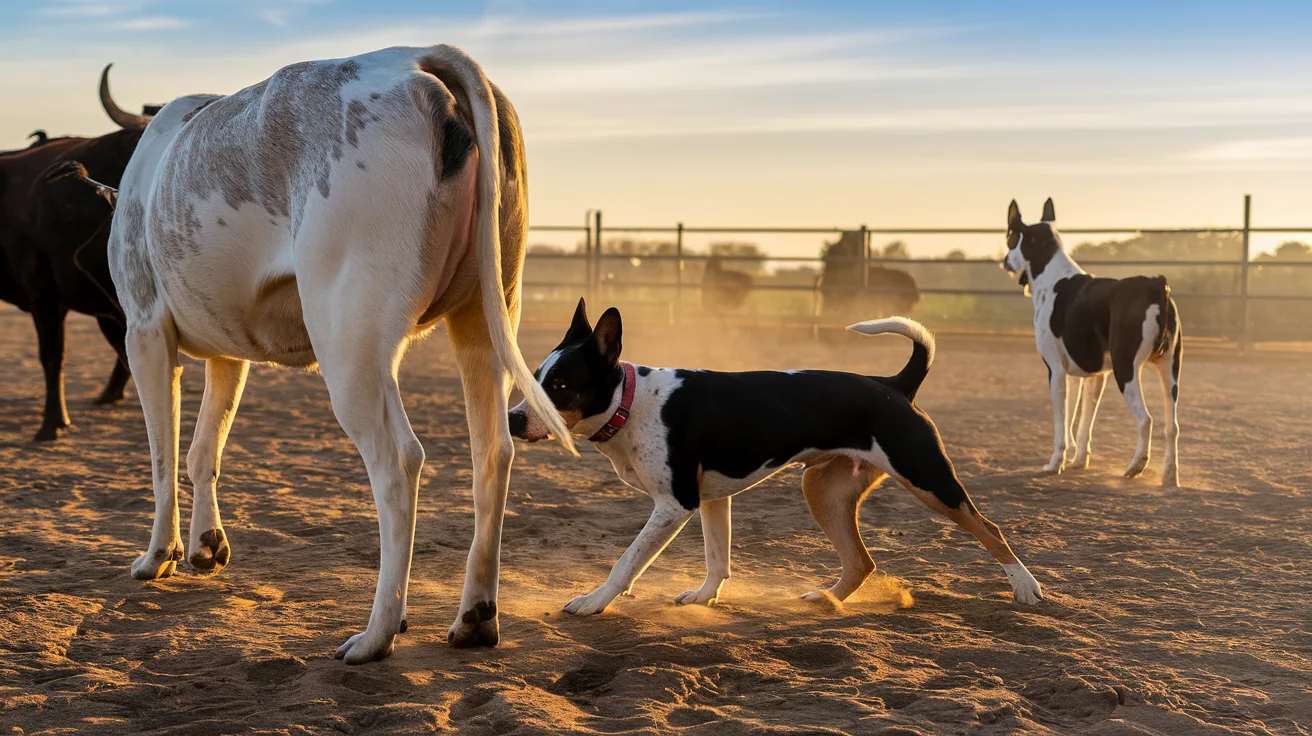
Energy Levels & Exercise Requirements
Both breeds are built for work and need serious exercise. Neither breed is a good fit if you’re not an active person. When comparing Australian Cattle Dog vs Kelpie, both require plenty of physical and mental stimulation to stay happy and healthy.
- Kelpie: Requires 2 to 3 hours of intense physical activity daily. This includes running, agility drills, and mentally stimulating tasks.
- Australian Cattle Dogs need 1.5 to 2 hours of exercise per day. They enjoy structured activities like herding, hiking, or obedience training.
Both breeds can become destructive without enough activity, leading to chewing, digging, or excessive barking.
Best Living Environment
- Farm or Rural Homes: Ideal setup, as both breeds thrive in open spaces.
- Suburban Homes with a Yard: Doable, but requires daily outdoor activity.
- Apartments: Not recommended unless the owner is committed to daily long walks, training, and playtime.
Both breeds need space to move, but they can adapt to different living situations if they get the proper exercise.
Compatibility with Families & Pets
- With Kids:
- Cattle Dog: More tolerant with children but may try to herd them by nipping.
- Kelpie: Less patient, better for families with older kids who can handle their energy.
- With Other Pets:
- Cattle Dogs: Can get along with other pets if socialised early, but they tend to dominate.
- Kelpies: More independent and territorial, not ideal for homes with multiple pets.
Health, Grooming & Training Needs
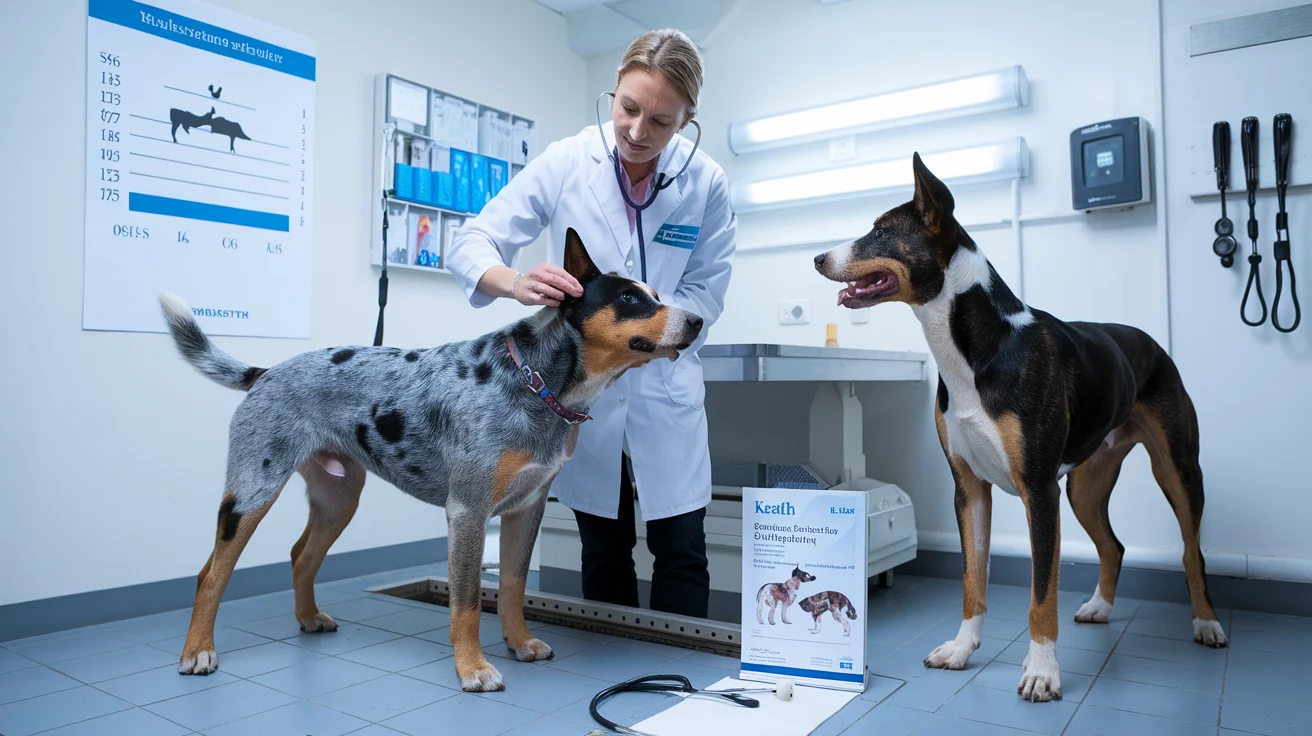
The Australian Cattle Dog and Kelpie are tough but need proper care. Let’s break it down.
Health Issues
Both breeds live 12-15 years, but can face:
- Cattle Dog: Hip dysplasia (20% of cases), PRA (eye disease), deafness.
- Kelpie: Collie Eye Anomaly, hip dysplasia (15% cases), patellar luxation.
Regular vet check-ups help prevent serious issues.
Grooming Needs
Both have short double coats with moderate shedding.
- Cattle Dog: Brushing once a week, bath every 6-8 weeks.
- Kelpie: Slightly more shedding, brush twice a week.
Training & Intelligence
Both breeds are highly intelligent but independent.
- Cattle Dog: Stubborn, needs firm training from 8 weeks old.
- Kelpie: Hardworking but strong-willed, needs daily mental challenges.
Both require 60-90 minutes of exercise daily.
Key Takeaways:
- History & Origins: The Australian Cattle Dog was bred for cattle herding, while the Kelpie was developed for sheep herding. Both originated in Australia and share some Dingo ancestry.
- Appearance & Temperament: Cattle Dogs are stockier with speckled coats, while Kelpies are leaner and come in more colours. Cattle Dogs are protective and independent, whereas Kelpies are eager to work and highly energetic.
- Exercise, Training & Care: Both breeds require intense daily exercise (2+ hours), regular training, and mental stimulation. Cattle dogs can be stubborn, while kelpies are more responsive and demand constant engagement.
Conclusion
Fellows, here’s the deal! When comparing Australian Cattle Dog vs Kelpie, both are loyal, intelligent, and built for hard work. If you need a strong, protective herder, the Australian Cattle Dog is your go-to.
But if you’re after a super energetic, always-on-the-move worker, the Kelpie might be the better pick. Neither breed is for couch potatoes; they need space, exercise, and mental challenges daily. You’ll have a dedicated, hardworking, and lifelong companion if you’re up for the commitment.
FAQs
Q1. Which is better for a farm, the Australian Cattle Dog or the Kelpie?
Both breeds are excellent working dogs, but it depends on your needs. The Australian Cattle Dog is great for herding cattle, while the Kelpie excels at managing sheep and other livestock. If you need a stronger, protective herder, go for the Cattle Dog. The Kelpie is a top pick if you want a faster, more agile worker.
Q2. Do Australian Cattle Dogs and Kelpies require a lot of exercise?
Absolutely! These dogs are high-energy working breeds that need at least 2+ hours of exercise daily. They can become bored, destructive, or difficult to manage without enough physical and mental stimulation. If you’re not ready for an active lifestyle, neither breed is the right choice.
Q3. Are Kelpies or Australian Cattle Dogs easier to train?
Both are intelligent and trainable, but their learning styles differ. Kelpies are more eager to please and respond well to training, while Australian Cattle Dogs can be more independent and stubborn. Early training and socialisation are key for both breeds to become well-behaved companions.
Q4. Can Australian Cattle Dogs and Kelpies live in apartments?
No, bro, these dogs thrive in open spaces. Both breeds need large yards or farm environments to run and work. Keeping them in an apartment without proper exercise will lead to restlessness, destructive behaviour, and stress. They are best suited for active owners with plenty of space.

